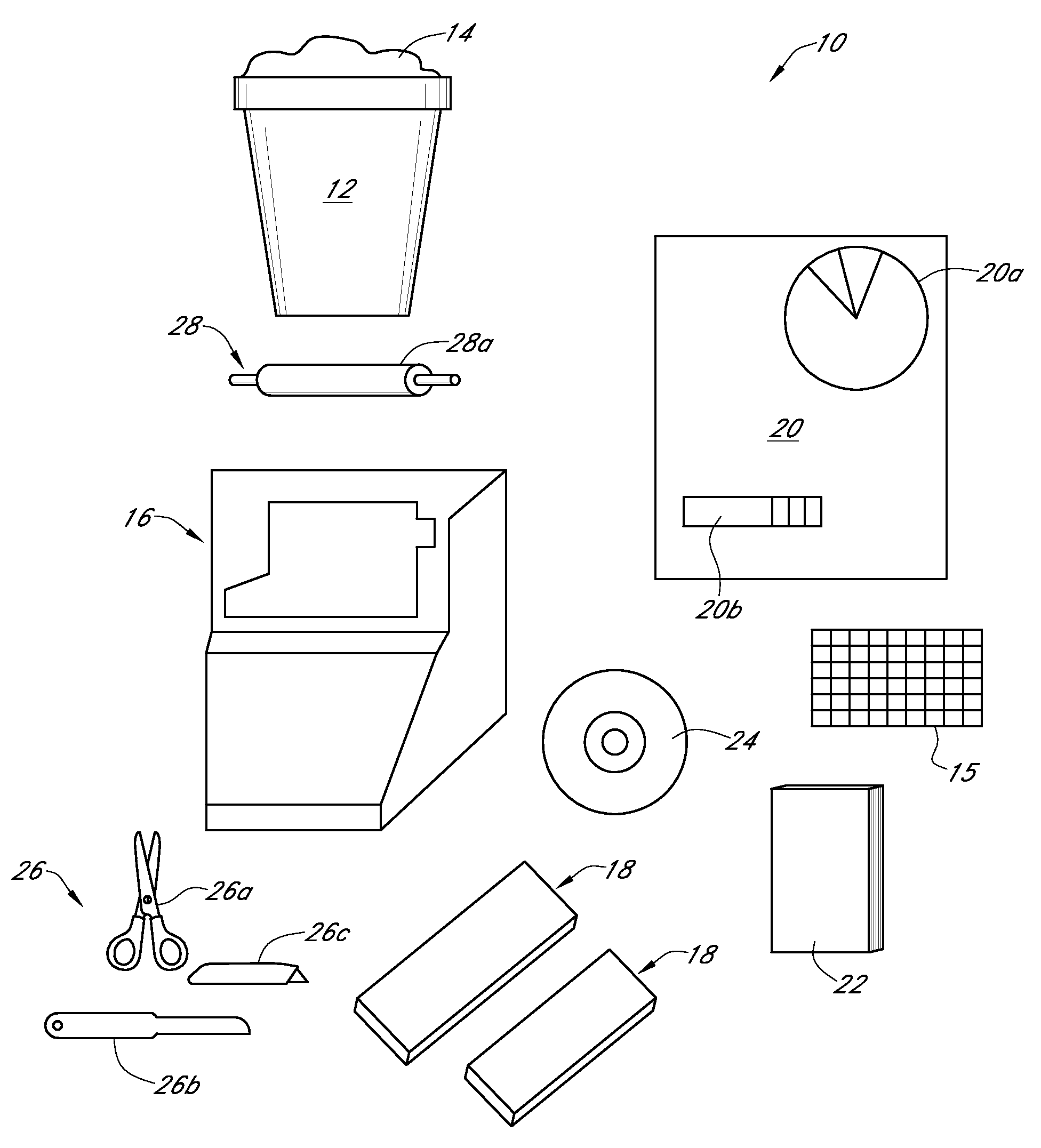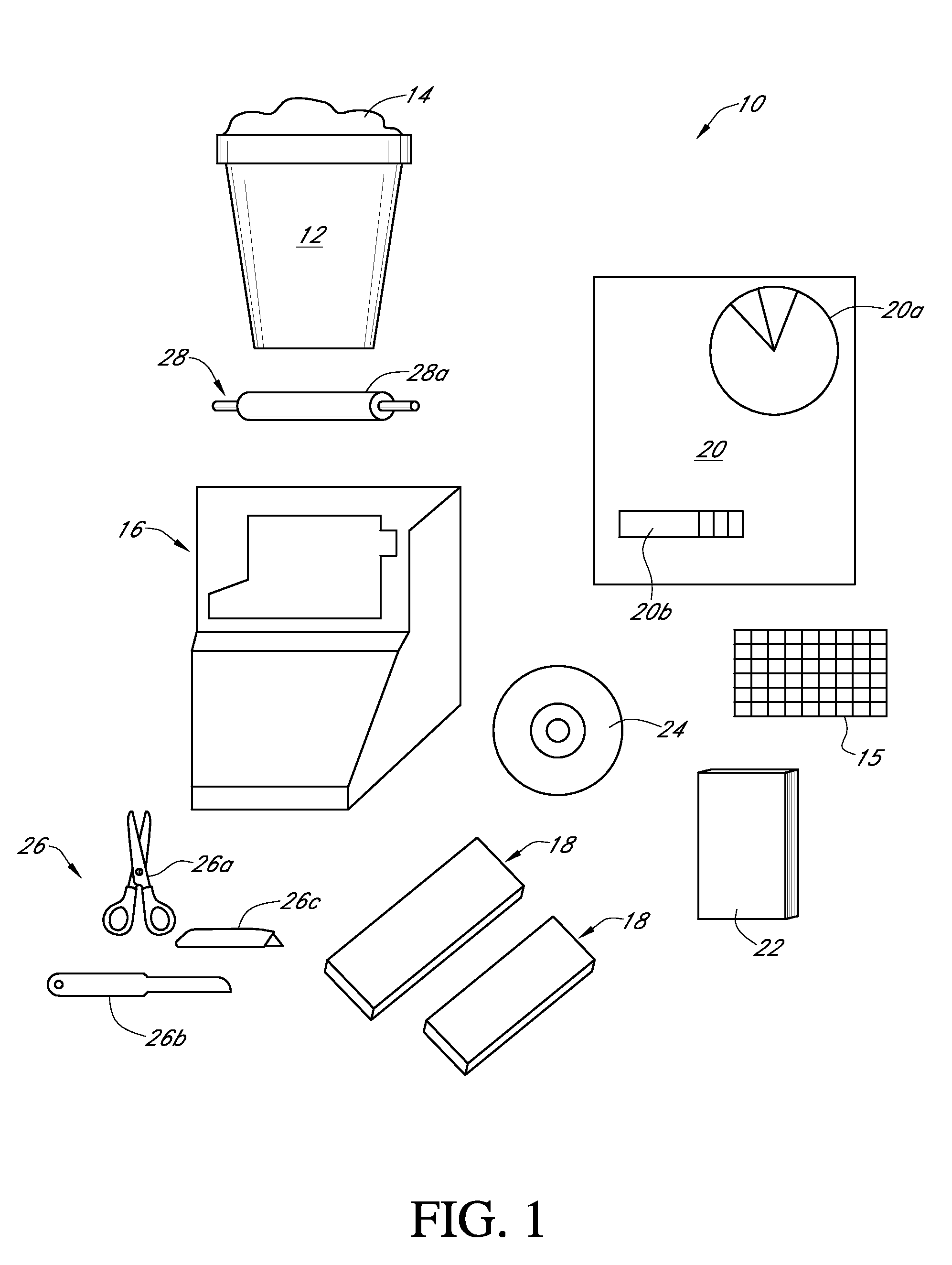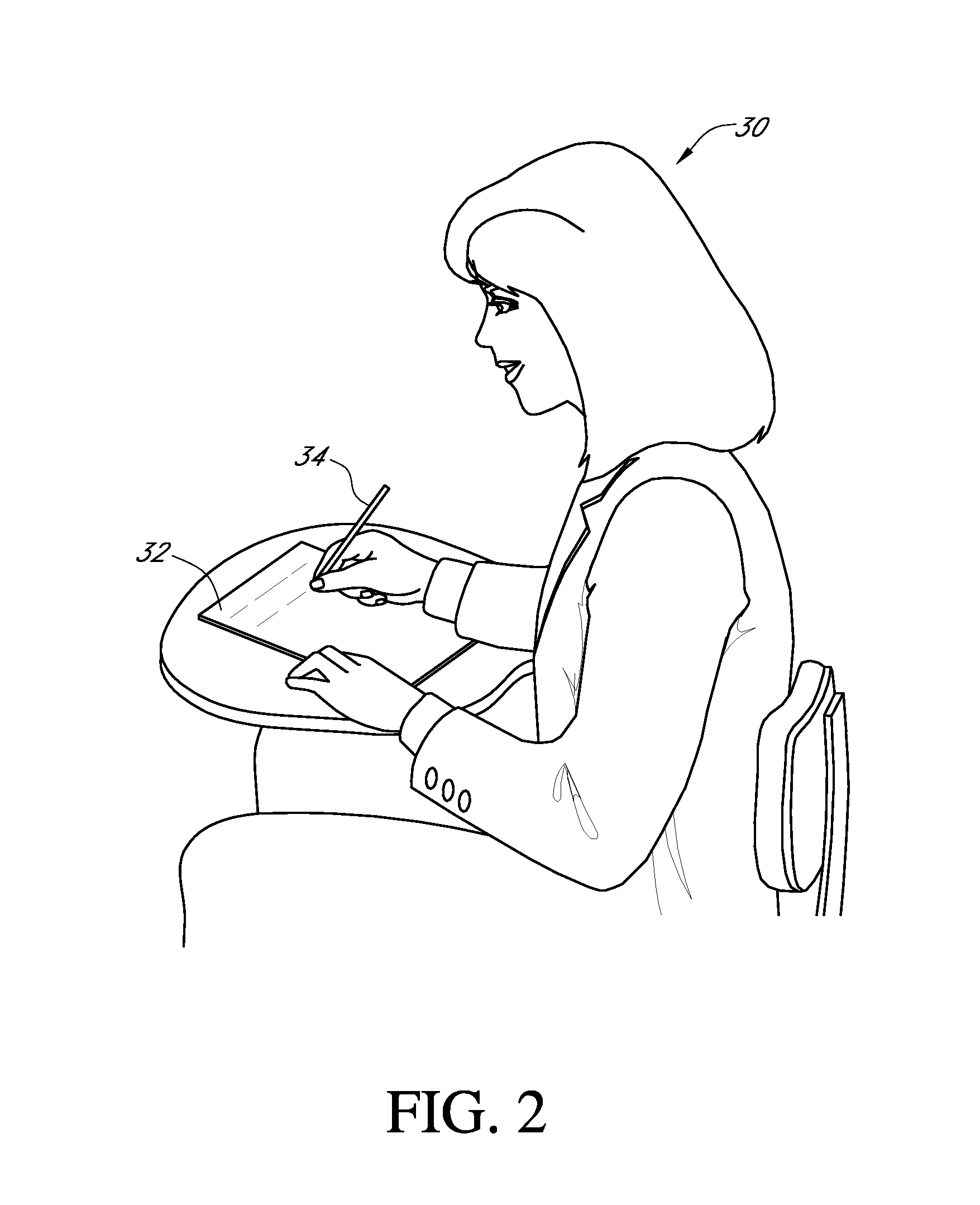Mathematics teaching kit
a maths and kit technology, applied in the field of mathematics teaching kits, can solve the problems of not being useful in determining the solution of problems, not providing moldable materials in prior art examples, and not providing teaching or instruction concerning the effective use of moldable materials for mathematical purposes, so as to improve the reasoning and understanding of mathematical principles
- Summary
- Abstract
- Description
- Claims
- Application Information
AI Technical Summary
Benefits of technology
Problems solved by technology
Method used
Image
Examples
Embodiment Construction
[0047]Generally speaking, a kit is shown for the teaching of mathematics that will allow students to reason and understand basic mathematical principles. The kit uses moldable materials such as: dough, clay, and commercially available plastically moldable materials e.g. “Playdough®”. The material is extruded to proper length and width. Cutters are used to fractionate the material. The fractions are used to solve elementary mathematical problems.
[0048]Now referring to FIG. 1, a kit 10 is shown for teaching mathematical principles, such as: fractions, percents, and basic algebra. The kit 10 is similar to kits found in the market place, such as the Crayola® kit and the Playdoh® kit. The kit of this invention is comprised of at least: a bucket 12, moldable material 14, an extruder 16, extruder dies 18, a work mat 20 with forms 20a imprinted thereupon, an instruction and work book 22, a CD, DVD, or media disk 24, for visually instructing teachers and students, cutters 26, such as: plasti...
PUM
 Login to View More
Login to View More Abstract
Description
Claims
Application Information
 Login to View More
Login to View More - R&D
- Intellectual Property
- Life Sciences
- Materials
- Tech Scout
- Unparalleled Data Quality
- Higher Quality Content
- 60% Fewer Hallucinations
Browse by: Latest US Patents, China's latest patents, Technical Efficacy Thesaurus, Application Domain, Technology Topic, Popular Technical Reports.
© 2025 PatSnap. All rights reserved.Legal|Privacy policy|Modern Slavery Act Transparency Statement|Sitemap|About US| Contact US: help@patsnap.com



